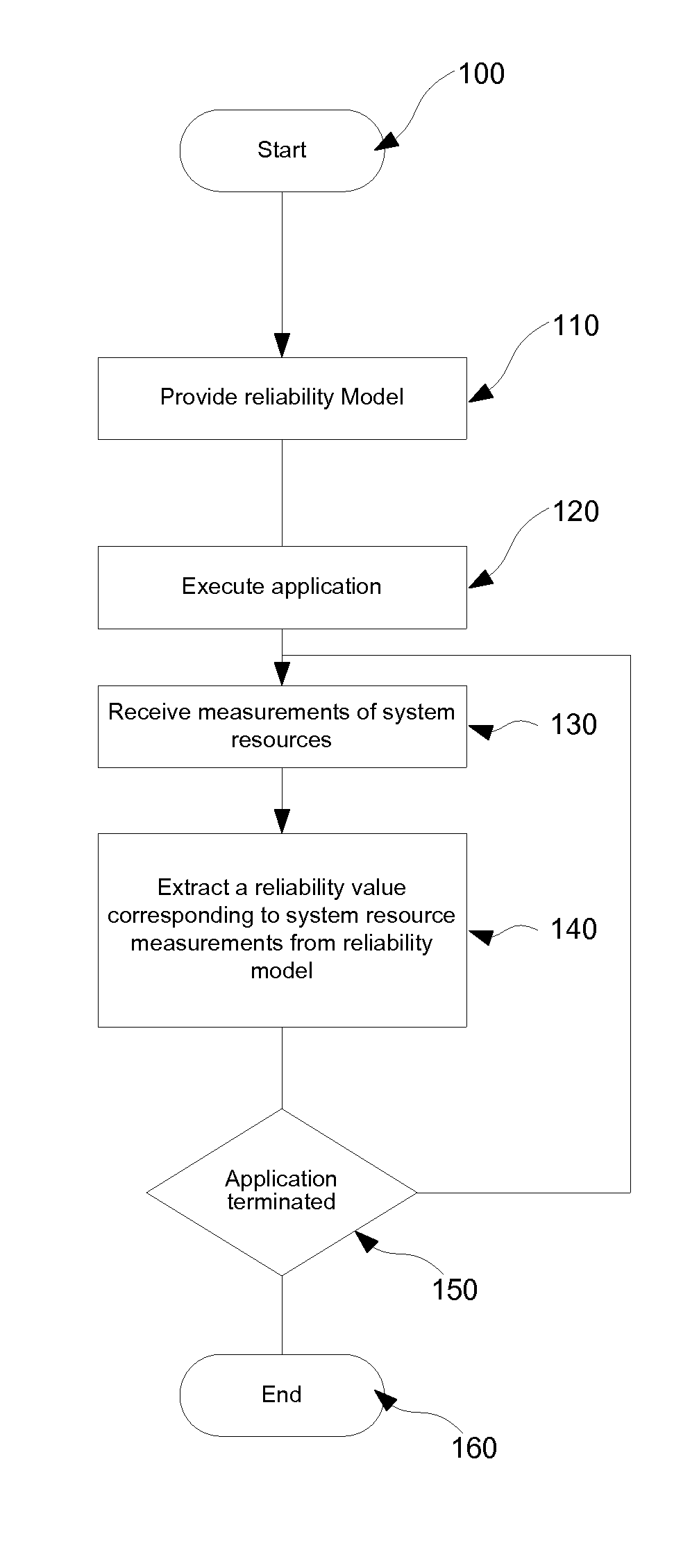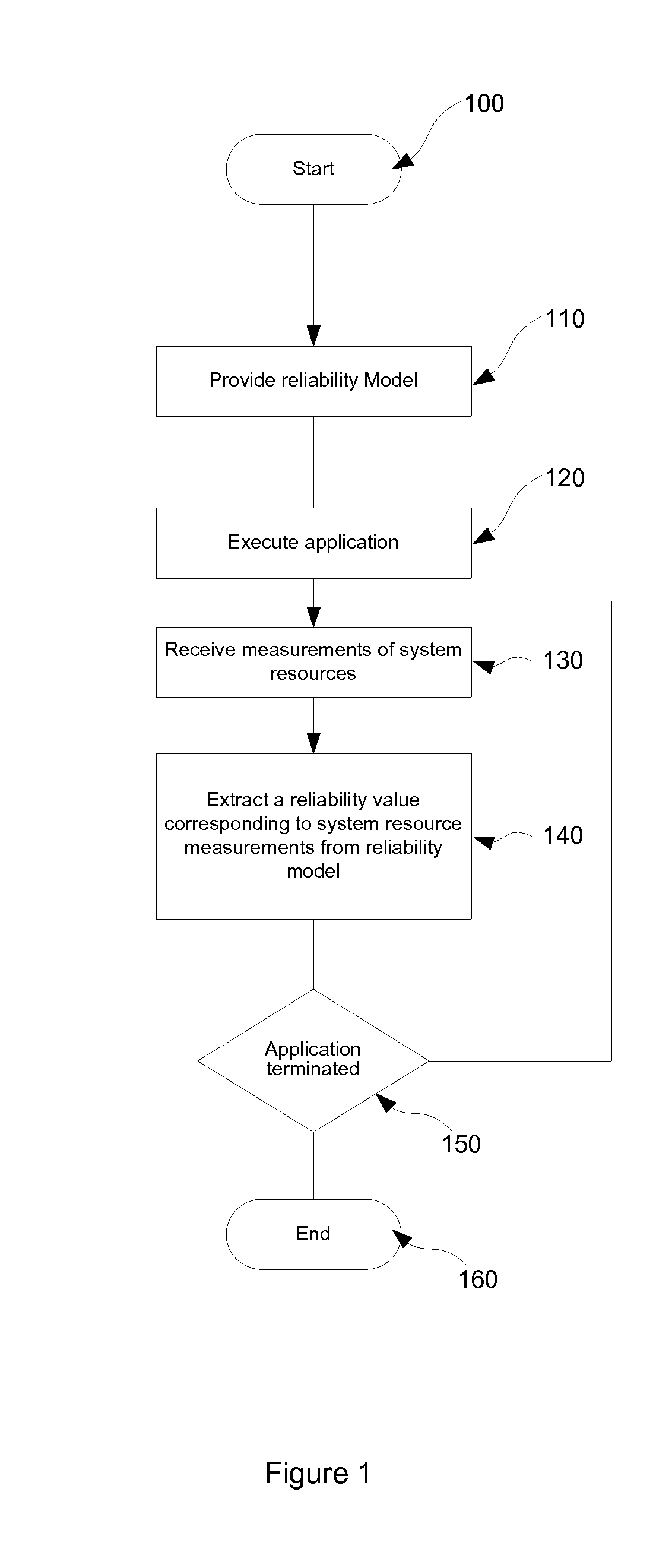Method and system for software behaviour management
a software behaviour and behavior technology, applied in the field of software behaviour management, can solve the problems of dramatic variations in available resources, and the prediction of the exact behavior of an application in the customer production environment from the results of functional test cases identified in the design phase,
- Summary
- Abstract
- Description
- Claims
- Application Information
AI Technical Summary
Benefits of technology
Problems solved by technology
Method used
Image
Examples
first embodiment
[0015]FIG. 1 shows the steps of the present invention. As shown, the process starts at step 100, and proceeds to step 110 at which a performance model for example as described in further detail hereafter is provided. At step 120 the application to which the performance model relates is executed, and at step 130 measurements the system resources used to define the model are received, for example from the operating system or other monitoring software or hardware. At step 140 the measurements are used to extract a performance value from the performance model corresponding to said measurements. At step 150 it is determined whether the application has terminated, in which case the process terminates at step 160, or otherwise the process returns to step 130, so that the process continues to monitor the performance level of the software as a function of monitored system resource availability for as long as the application is operational. Accordingly, there is provided a method of optimisin...
second embodiment
[0030]FIG. 4 shows the steps of the present invention. The process of FIG. 4 is the same as that as FIG. 3, but details certain exemplary sub-steps of the step 110 of providing a performance model. More specifically, FIG. 4 shows one possible method of creating such a performance model. As shown, the process defined in the substep 110 starts at step 411, whereby the resources of a test system are configured for the purposes of a test execution. As discussed above, this may be implemented in many ways depending on the nature of the test system itself, for example by suitably configuring a virtual machine, application server etc. The process next proceeds to step 413 during which the application is monitored and any errors recorded. Once the application has been run to termination, or through a predefined test sequences, or for a predefined period of time, the process proceeds to step 415, at which it is considered whether the application has been executed under each of the different ...
third embodiment
[0048]FIG. 5 shows the steps of the present invention. The process of FIG. 5 is the same as that as FIG. 3, but details certain further steps between steps 140 and 150. More specifically, FIG. 5 shows one way of using the performance value extracted from the performance model at step 140. As shown, rather than proceeding directly to step 150 after step 140 the process proceeds to step 541, at which it is determined whether the performance value extracted at step 140 falls below a predetermined threshold or not. In accordance with present embodiment, this predetermined threshold represents an acceptable performance level. This threshold may be a value specifically associated with the application, a particular user account, a particular machine, the time of day at which the application is executed, etc. There may be defined a hierarchy of applications, whereby the threshold for a particular application is defined by its position in that hierarchy, such that more important or urgent ap...
PUM
 Login to View More
Login to View More Abstract
Description
Claims
Application Information
 Login to View More
Login to View More - R&D
- Intellectual Property
- Life Sciences
- Materials
- Tech Scout
- Unparalleled Data Quality
- Higher Quality Content
- 60% Fewer Hallucinations
Browse by: Latest US Patents, China's latest patents, Technical Efficacy Thesaurus, Application Domain, Technology Topic, Popular Technical Reports.
© 2025 PatSnap. All rights reserved.Legal|Privacy policy|Modern Slavery Act Transparency Statement|Sitemap|About US| Contact US: help@patsnap.com



